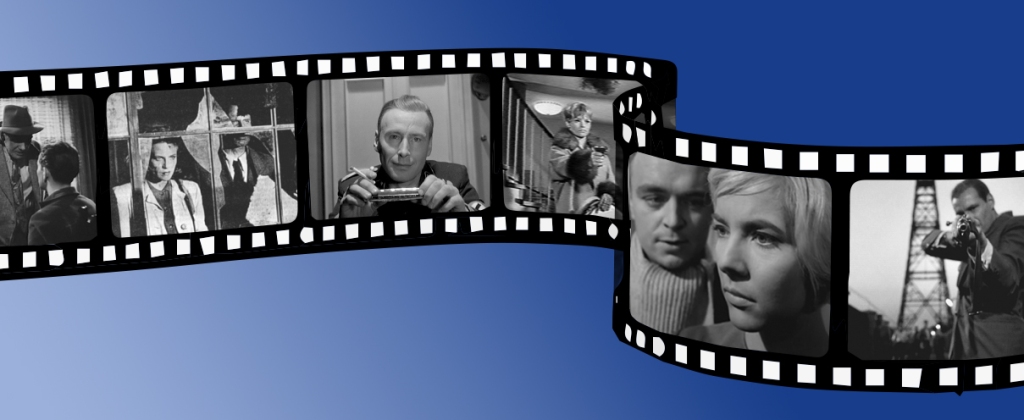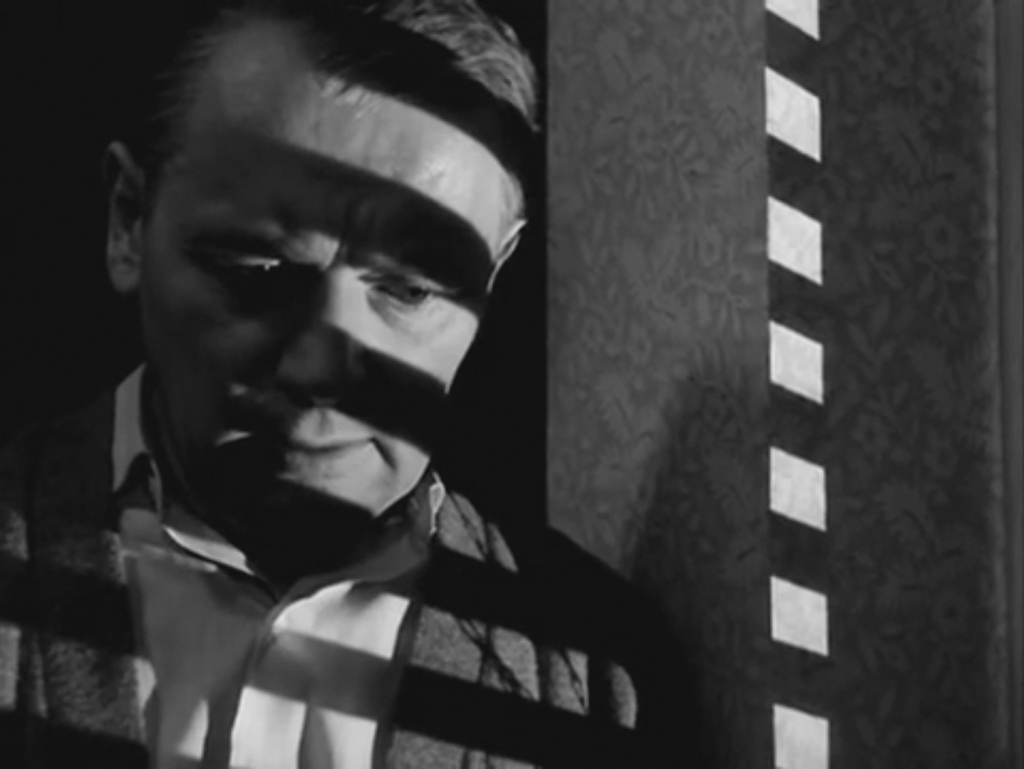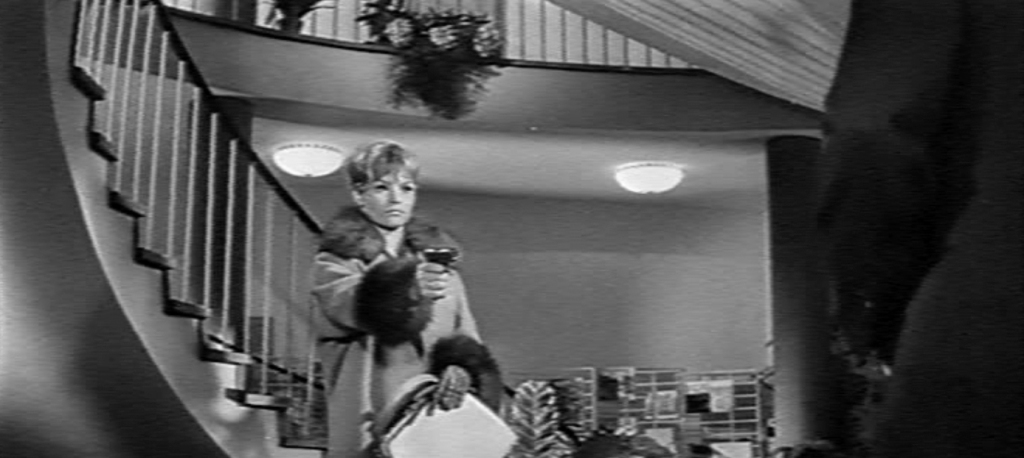
Before I get too far into this article, I should point out that one’s opinion of what constitutes film noir is a highly subjective one. For some, the only films that qualify are those that contain the following elements:
- Black-and-White film
- Chiaroscuro lighting
- Made after World War II and before JFK became president
- An anti-hero protagonist
- A femme fatale
- Crime
Anything else is either proto-noir, neo-noir, or noir adjacent. While others use the rule United States Supreme Court Justice Potter Stewart used for pornography: “I know it when I see it.”
I find the latter criterion more useful. If you follow the first criteria to the letter, you’d have to exclude films such as Leave Her to Heaven and Chinatown and that makes no sense. Still, we all have our own opinions on what constitutes film noir. Personally, I draw the line at fantasy, so I’ve never considered movies like Repeat Performance and The Red Shoes film noir, even though both movies have been shown at the Noir City film festival.
With all this in mind, some of the films I discuss here won’t fit neatly on somebody’s noir list. I should also mention that film noir as a genre thrives best in a culture where a certain amount of police corruption is recognized. This wasn’t something that the SED was remotely willing to acknowledge. As far as they were concerned, everyone in the police and government in the GDR was above reproach and any attempt to suggest otherwise could get your film relegated to the cellar. Comic actor Rolf Herricht’s film Hands up or I’ll Shoot (Hände hoch oder ich schieße) is about as innocuous a comedy as you could hope for, yet it was banned because the main character was a police officer who was seeing a psychiatrist for his depression.
Nonetheless, like the Hollywood directors working under the Hays Code, East German filmmakers found ways to skirt the obstacles that censors threw in their paths. If they set a story in the United States, filmmakers could make the cops as corrupt as they wanted. America was always available as a (not completely unwarranted) bogeyman. They also had the advantage, if one can call it that, of having had nearly every man in Germany forced to join the Wehrmacht, or, for certain professions, join the Nazi party. This had the effect of automatically making every male of a certain age an anti-hero or a villain. With the exceptions of the people who spent the War in exile or in concentration camps, no one in Germany was above reproach.1
With these points in mind, here are a few East German films that fit well in the film noir category, because of their style, their subject matter, or both. I’ve intentionally left off the spy films and most Krimis, which feature a lot of the elements of film noir, but lack their look and feel.
The Murderers Are Among Us (Die Mörder sind unter uns)

The Murderers Are Among Us was the very first film made in Germany after the War. It’s the first film attributed to DEFA (East Germany’s film production company) although production started before DEFA existed. Hildegard Knef stars as Susanne Wallner, a remarkably healthy-looking concentration camp survivor who returns home to find an ex-doctor Hans Merten (Wilhelm Borchert) inhabiting her old apartment. Merten is an angry and disagreeable guy and It turns out he has good reasons for his bitterness. These reasons are eventually revealed through flashbacks. It’s a dark film, but well made and evocative. Filmed, as it was, in 1946, they didn’t need to create sets for the bombed out buildings. The Brits and Americans provided those at no extra charge.
The Second Track (Das zweite Gleis)

Of all the films from East Germany, this one comes the closest to fitting the classic criteria of film noir. The protagonist is Frank Reisner (Horst Jonischkan), a criminal who works with a man named Erwin Runge (Walter Richter-Reinick). Railroad dispatcher Walter Brock (Albert Hetterle) catches Reisner and Runge stealing from a boxcar, but mysteriously lets them go. Runge thinks he recognizes Brock, but can’t remember from where, so he enlists his partner Reisner to find out more about Brock. Reisner decides that the best way to do this is to get close to Brock’s daughter Vera (Annekathrin Bürger). Of all the films made in East Germany, this comes the closest to the classic definition of film noir. Most of the characters are morally compromised, with the exception of Vera, who acts as sort of a an anti-femme fatale, convincing Reisner to do the right thing.2 The cinematography is spectacular and we even get that classic cliché of Hollywood film noir: light through venetian blinds.
Chronicle of a Murder (Chronik eines Mordes)

Can a film’s femme fatale also be the protagonist and the heroine of the story? If so, then Chronicle of a Murder could qualify as film noir. This is the story of a woman who gets revenge for what was done to her and her family during WWII. It also makes a statement about the way West Germany accepted bona fide Nazis back into their government. As you might imagine, neither West Germany nor the United States was happy to have this pointed out. Sadly, this film isn’t available with subtitles, but it really should be. It’s one of the best films to come out of DEFA. Based on a book by Leonhard Frank.
Bellboy Ed Martin

One year the Noir City Film Festival showed Edward L. Cahn’s 1932 film Afraid to Talk. It’s a very dark, pre-noir film that was based on Albert Maltz’s controversial play, Merry Go Round. Maltz worked in Hollywood for many years as a screenwriter, but he was also an unapologetic communist, which meant the end of his career when the House Un-American Activities Committee (HUAC) went after anyone in Hollywood that supported leftist ideals. In the fifties, the play became popular in East Germany under the name Hotelboy Ed Martin. In 1955, DEFA decided to do their own version of Maltz’s play. While Cahn’s 1933 version changed the ending of the play to show that crime doesn’t pay, the East Germans kept the ending to show that, in a capitalist country such as the USA, crime does pay as long as you have money and power.
The Gleiwitz Case (Der Fall Gleiwitz)

Whether or not The Gleiwitz Case is film noir is up for debate. It has no femme fatale and the protagonist is more villain than anti-hero. It doesn’t even have a plot really. A man is hired to shoot another man so he does. That’s the story in a nutshell. Of course, there are other ramifications and a big part of the appeal is the film itself. The Gleiwitz Case is a retelling of one of the false flag attacks staged by the Nazis to give Hitler an excuse to invade Poland. It’s a dazzling film, stylishly shot by director Gerhard Klein and the Czech cinematographer Jan Čuřík. This one is a must-see, but don’t expect a happy ending.
With the exceptions of Chronicle of a Murder and Bellboy Ed Martin, you can see these films on Kanopy, which might be free through your local library or University.
1. In The USA, things were not so nuanced. For the first twenty years after the War, the quickest way to make a people appear villainous was to give them German accents.
2. This leads us into a discussion as to what constitutes a femme fatale. Most people take this to mean a woman with evil intent (think Jane Greer’s Kathie Moffat in Out of the Past, or Rita Hayworth’s Elsa Bannister in The Lady from Shanghai), The anti-femme fatale is a “good” woman, who by the force of her will and the protagonist’s love for her, causes his downfall (Veronica Lake’s Ellen Graham in This Gun for Hire is probably the best example of this). Since the protagonists usually die thanks to their love for these women, you argue that they are no less femmes fatales than the “bad girls.”
I you like what I do here and would like to let me know, you can buy me a cup of coffee by clicking on the button to the left.
© Jim Morton and East German Cinema Blog, 2024. Unauthorized use and/or duplication of this material without express and written permission from this site’s author and/or owner is strictly prohibited. Excerpts and links may be used, provided that full and clear credit is given to Jim Morton and East German Cinema Blog with appropriate and specific direction to the original content.

